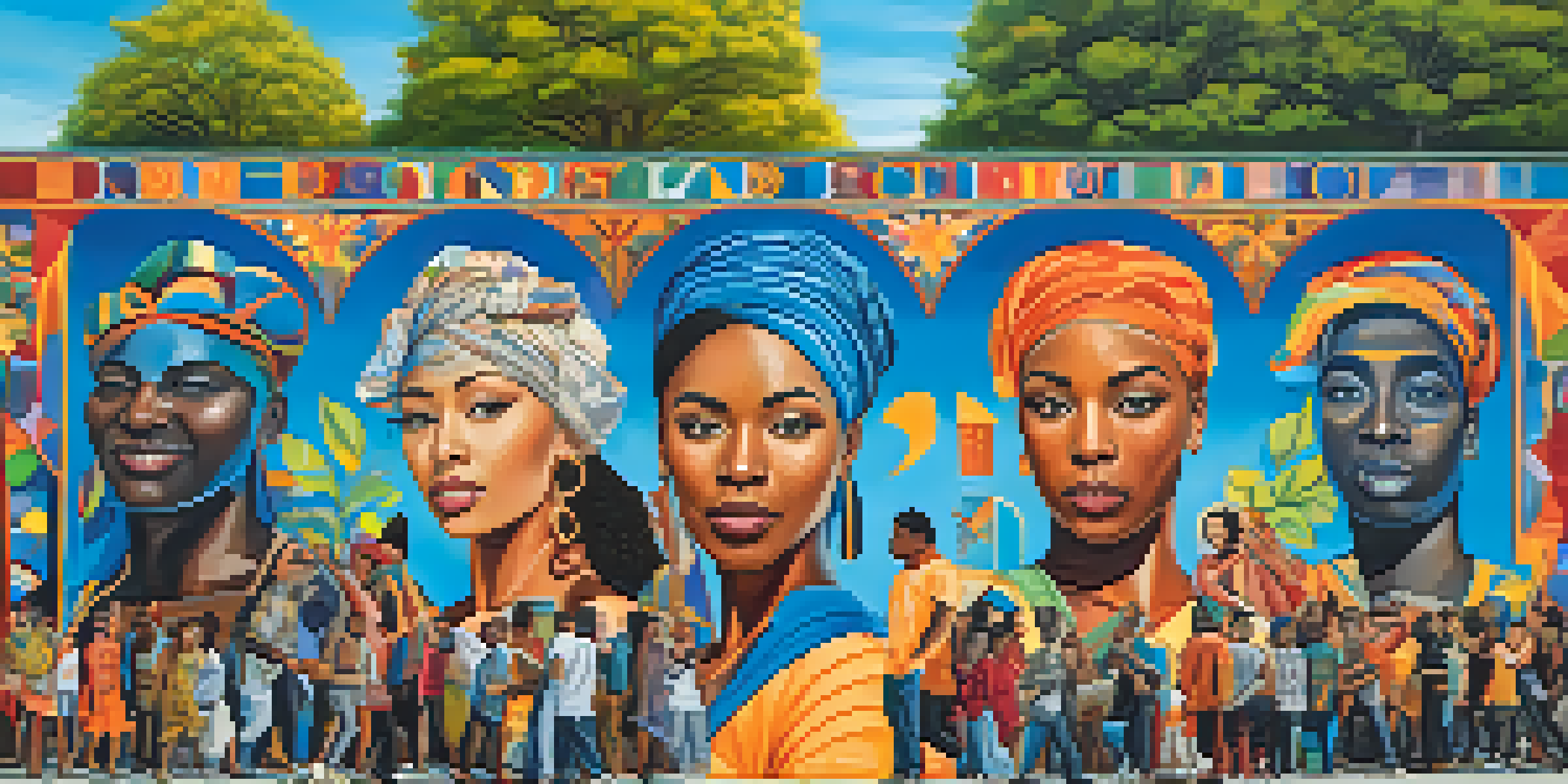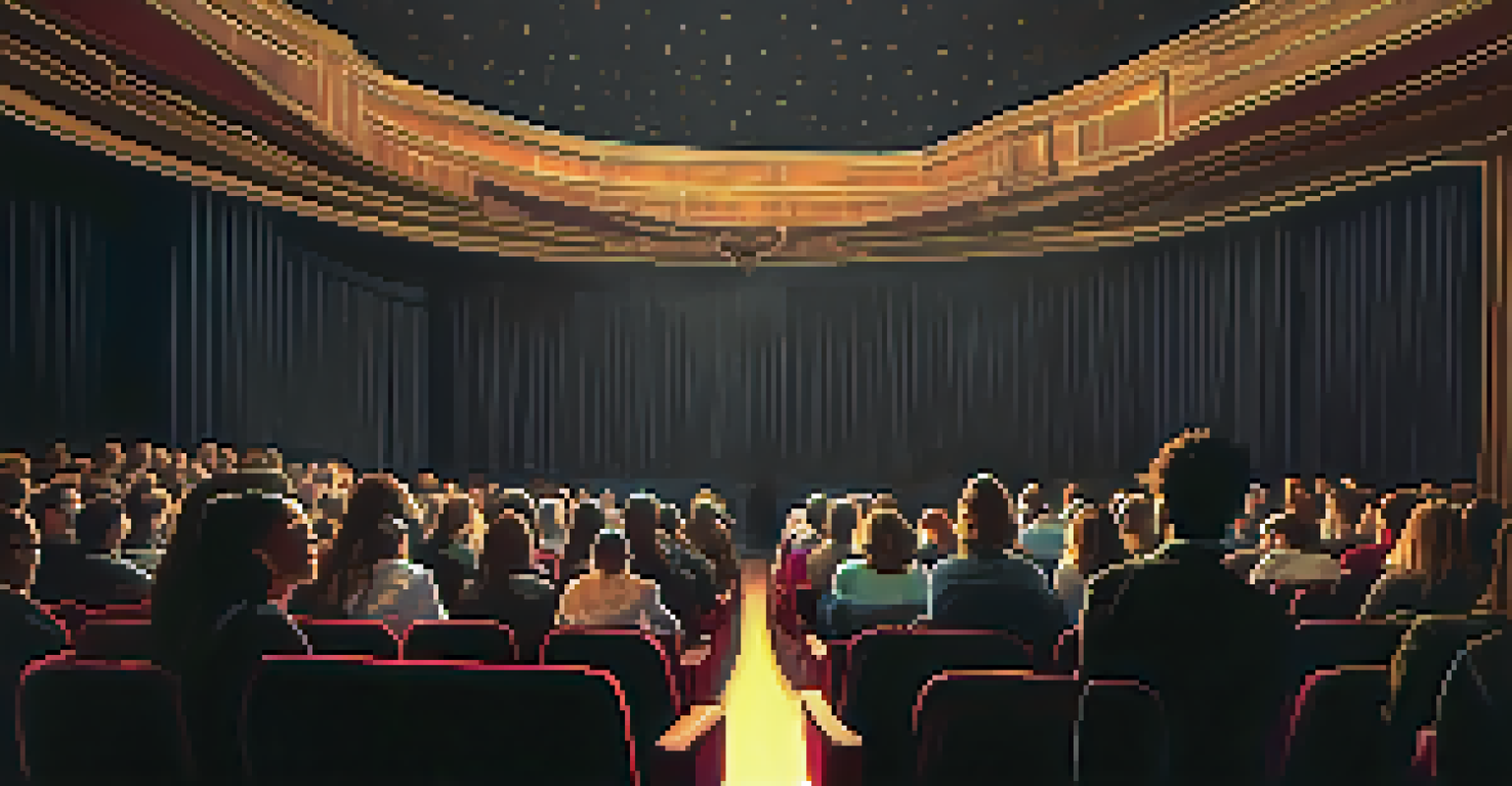Artistic Responses to Gender Identity Legislation

Understanding Gender Identity Legislation's Impact
In recent years, gender identity legislation has sparked significant debate and division within society. These laws, aimed at defining and protecting the rights of individuals based on their gender identity, often intersect with various social movements. Artists have increasingly turned to their craft to process and respond to these complex issues, reflecting societal tensions and personal experiences.
Art is the most beautiful of all lies; it is a lie that tells the truth about ourselves.
For instance, the introduction of restrictive laws in certain regions has led to a surge of artistic works that challenge these narratives. Artists use their platforms to advocate for inclusivity and equality, often depicting the struggles faced by marginalized communities. Through their art, they can raise awareness and inspire conversations around these critical topics.
Moreover, these legislative changes can influence the themes and styles of artistic expression. Artists may find themselves drawn to more provocative forms of expression, utilizing shock value or emotional depth to provoke thought and empathy. This evolution in artistic response illustrates the profound impact that societal issues can have on the creative process.
Art as a Medium for Advocacy and Change
Art has long been a powerful tool for advocacy, and in the context of gender identity legislation, this is especially true. Many artists leverage their work to advocate for change, using visual arts, music, and performance as platforms to share stories and experiences. Through compelling narratives, they can humanize abstract legislative concepts and encourage audiences to reflect on their own perspectives.

For example, performance art often provides a visceral experience that can be more impactful than traditional forms of communication. Artists may embody the struggles of those affected by gender identity laws, showcasing their narratives in a way that resonates on a personal level. This immersive experience can foster empathy and understanding among audiences who may not have previously engaged with these issues.
Art as a Tool for Social Change
Artists leverage their work to advocate for inclusivity and equality, using various forms of art to humanize and express the challenges posed by gender identity legislation.
Additionally, collaborative art projects that involve community members can amplify voices that are often overlooked. By creating art together, participants can share their experiences and perspectives, fostering a sense of solidarity and collective empowerment. This collaborative approach can lead to a richer, more nuanced conversation around gender identity that transcends individual experiences.
Visual Arts: Reflecting Identity and Resistance
Visual arts, including painting, sculpture, and photography, play a significant role in responding to gender identity legislation. Through their work, artists can create vivid representations of identity, challenging stereotypes and societal norms. By visually articulating the complexities of gender identity, they encourage viewers to question their own biases and assumptions.
The role of the artist is to ask questions, not to answer them.
Consider the impact of street art, which has emerged as a powerful form of resistance against oppressive laws. Artists often use public spaces to communicate messages of support and empowerment for marginalized communities. These striking visuals can capture attention and provoke dialogue, making them a vital part of the conversation surrounding gender identity.
Furthermore, exhibitions dedicated to gender identity themes offer a space for exploration and discussion. By showcasing diverse perspectives, these exhibitions can educate audiences about the challenges faced by individuals within the LGBTQ+ community. This visual representation of lived experiences serves as a reminder of the ongoing struggle for acceptance and equality.
Literature and Poetry: Narratives of Experience
Literature and poetry provide another avenue for exploring gender identity in the context of legislation. Writers often use their words to express the intricacies of their identities, crafting narratives that resonate with both personal and universal experiences. These literary works can serve as a form of resistance against oppressive laws, offering insight into the emotional and psychological impacts of such legislation.
Through storytelling, authors can illuminate the often invisible struggles faced by those affected by gender identity laws. Their characters may navigate a world that is unwelcoming or hostile, allowing readers to empathize with their journeys. This connection can foster greater understanding and support for the LGBTQ+ community.
Visual Arts Challenge Norms
Through visual arts, creators challenge stereotypes and societal norms, fostering dialogue around gender identity and the experiences of marginalized communities.
Moreover, poetry, with its ability to evoke emotion through language, can powerfully articulate feelings of isolation, hope, and resilience. Poets have the unique ability to distill complex emotions into concise verses, making their messages accessible and relatable. This creative expression can be both cathartic for the writer and enlightening for the reader.
The Role of Music in Shaping Conversations
Music has always been a vehicle for social change, and its role in responding to gender identity legislation is no exception. Many musicians draw upon their personal experiences and societal observations to create songs that resonate with listeners. These anthems often address themes of identity, acceptance, and resistance, providing a soundtrack to the ongoing struggle for equality.
For example, artists like Sam Smith and Lizzo have used their platforms to raise awareness about gender identity issues, creating music that speaks directly to their experiences. Their powerful lyrics and catchy melodies can resonate widely, inviting listeners to engage with important topics. This connection can foster a sense of community and solidarity among those who feel marginalized.
Additionally, music festivals and events focused on LGBTQ+ rights can serve as both celebration and protest. These gatherings create spaces for artists and fans to come together in support of shared values. Through the power of music, collective voices can amplify calls for change, making a lasting impact on public perception and policy.
The Intersection of Art and Activism
The intersection of art and activism is a crucial space for addressing gender identity legislation. Many artists identify as activists, using their work to challenge the status quo and advocate for change. This blending of art and activism creates a dynamic platform for dialogue and can inspire action within communities.
For instance, art installations that invite public participation can engage audiences in meaningful ways. These interactive experiences encourage individuals to reflect on their beliefs and biases, fostering a deeper understanding of gender identity issues. By actively involving the public, artists can create a sense of ownership over the conversation.
Music Amplifies Gender Identity Issues
Musicians use their platforms to raise awareness and create anthems that resonate with listeners, fostering community and solidarity around gender identity themes.
Moreover, the visibility of art activism can attract media attention, further amplifying important messages. When artists use their platforms to speak out against injustice, they can reach broader audiences and encourage others to join the cause. This ripple effect can lead to greater awareness and ultimately, systemic change.
Challenges Facing Artists in the Current Climate
Despite the powerful role that art plays in responding to gender identity legislation, artists face numerous challenges in the current climate. Increasing censorship and backlash against progressive messages can stifle creativity and limit artistic expression. This environment can be particularly daunting for those whose work directly addresses controversial topics.
Additionally, funding for projects focused on LGBTQ+ themes may be limited, forcing artists to seek alternative means of support. This can hinder the development of impactful works that address critical issues. However, many artists continue to persevere, finding innovative ways to share their messages despite the obstacles they encounter.

Furthermore, the emotional toll of creating work that addresses personal and societal struggles can be significant. Artists often grapple with the weight of their narratives, which can lead to feelings of vulnerability and frustration. Nevertheless, this emotional investment can also fuel their creativity, resulting in powerful and transformative art.